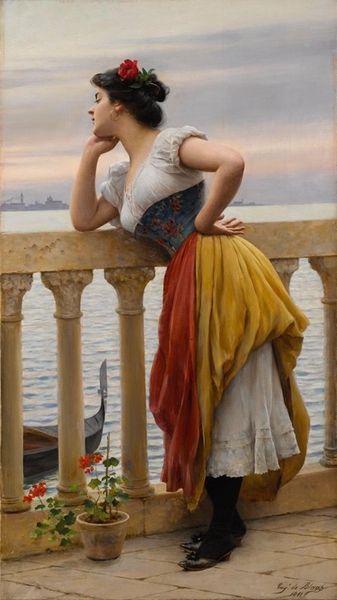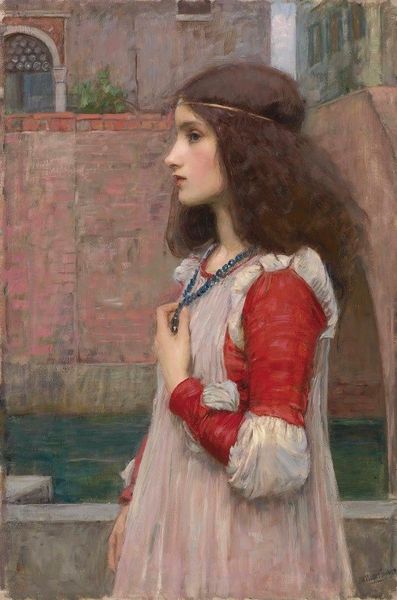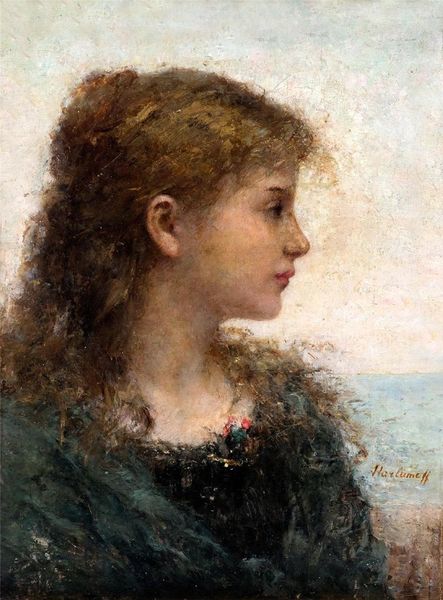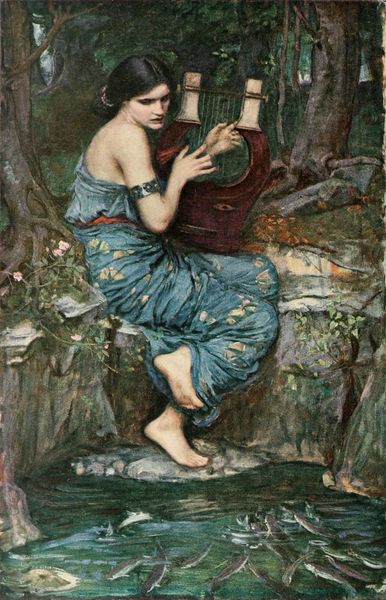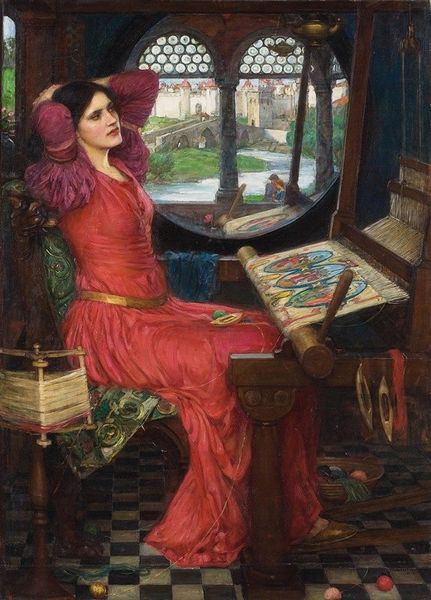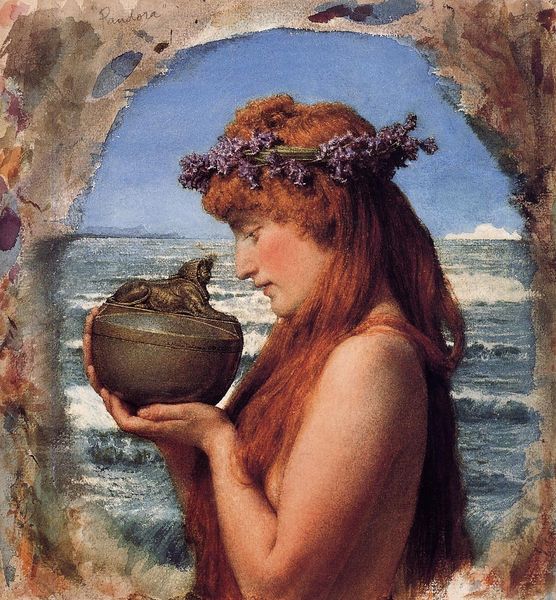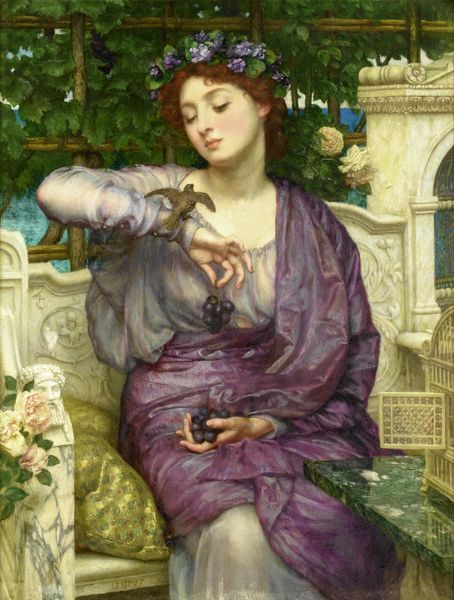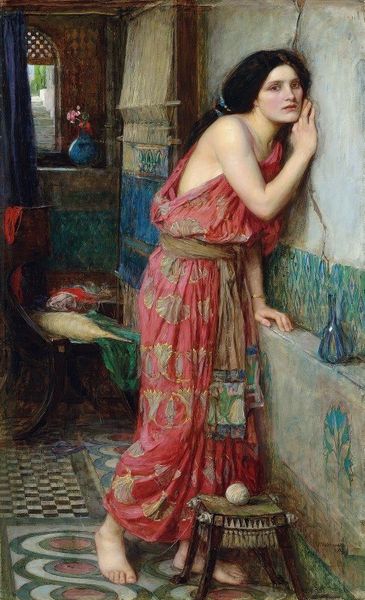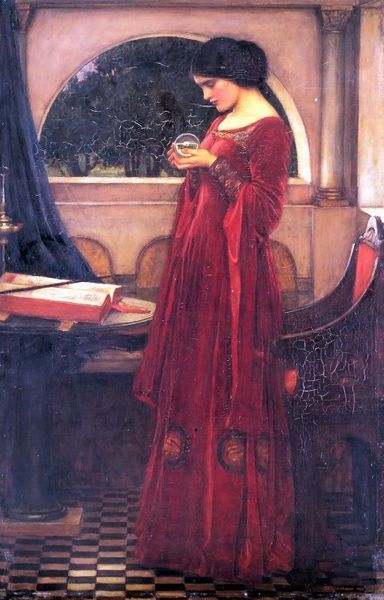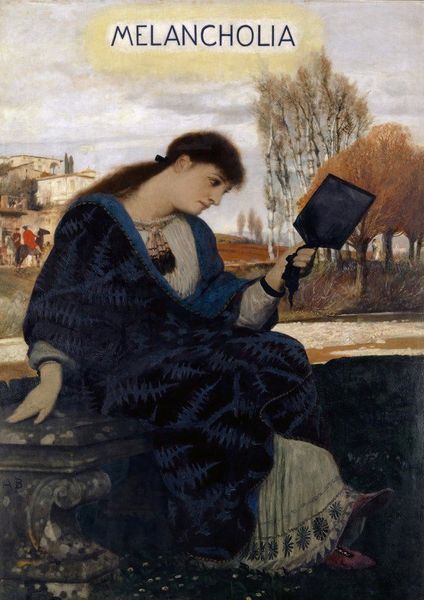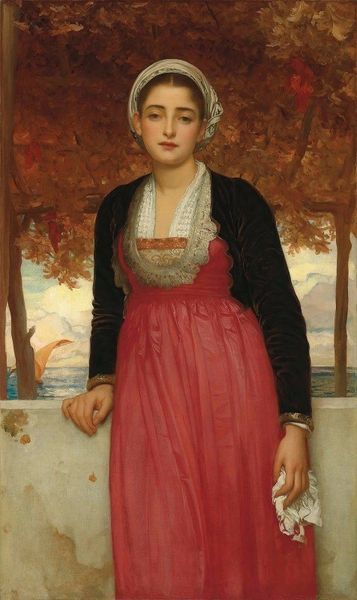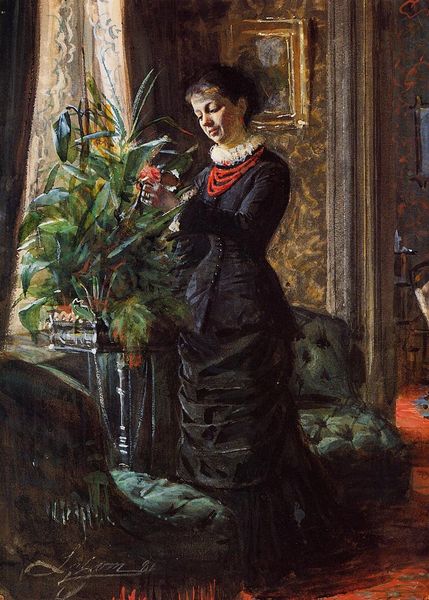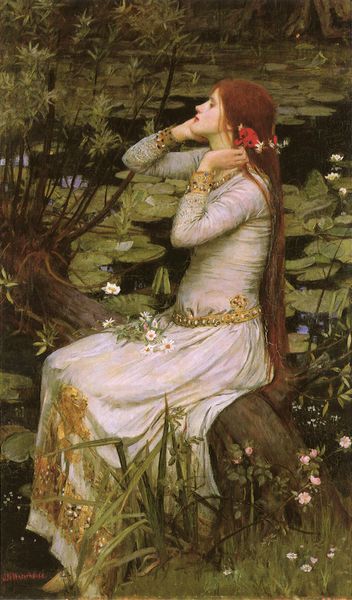
Dimensions: 53.75 x 67.5 cm
Copyright: Public domain
Curator: Here we have John William Waterhouse's "Destiny," painted in 1900. What's your initial read of this piece? Editor: A heavy melancholy seems to seep from the canvas. The woman is beautifully rendered, of course, but her downturned gaze and the rather oppressive architecture… it all speaks to constraint and unfulfilled longing. Curator: That sense of melancholy absolutely resonates with the symbols Waterhouse has included. Notice the ships sailing in the distance through what appears to be a looking glass or a reflective portal. There's a clear sense of possibility and perhaps the future beckoning. But what restricts this woman? Editor: It's interesting you bring that up. She's quite literally boxed in, isn't she? Trapped between these worlds… past and future. I see this as a commentary on women's societal position, a perpetual in-between-ness, forced to choose between domesticity and a larger, often inaccessible, world. That vibrant but muddied crimson of her dress suggests an inner fire struggling against imposed boundaries. Curator: Precisely. I find the gazing pool she holds, seemingly of the darkest indigo, such a potent symbol. It’s a portal to the subconscious, a reflection of both hope and the fear that accompanies choosing one’s path. Waterhouse, throughout his oeuvre, returns to these mythic women at crossroads, but always filtered through his signature dreamy Romantic lens. It’s quite interesting he painted this on canvas using oil paint. Editor: Do you think that these women become icons for suppressed desires? I would guess the longing Waterhouse portrays taps into an awareness of curtailed female agency and the limited roles women were confined to historically. Is there a coded resistance in the quietness he depicts? Curator: It’s entirely possible to interpret the artist's work in this manner. I consider the vessels at sail. While seemingly suggestive of adventure, perhaps they stand to represent an enforced voyage away from ancestral grounds in view of commercial enterprise. Editor: A compelling, conflicting depiction of hope. These symbols layer in ways that question, challenge, but do not offer resolution. Curator: Ultimately, Waterhouse masterfully presents ambiguity through symbolism. I will always appreciate that openness to multiple, competing interpretations, and how cultural understanding is a dance with time and context. Editor: Exactly. "Destiny" prompts crucial dialogue that exposes limitations in art historical understanding of female representation through various stages in western culture, despite its surface-level beauty. It shows how complex the reality of being is.
Comments
No comments
Be the first to comment and join the conversation on the ultimate creative platform.
